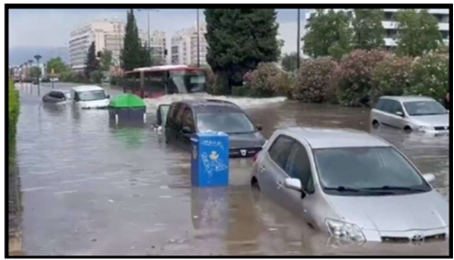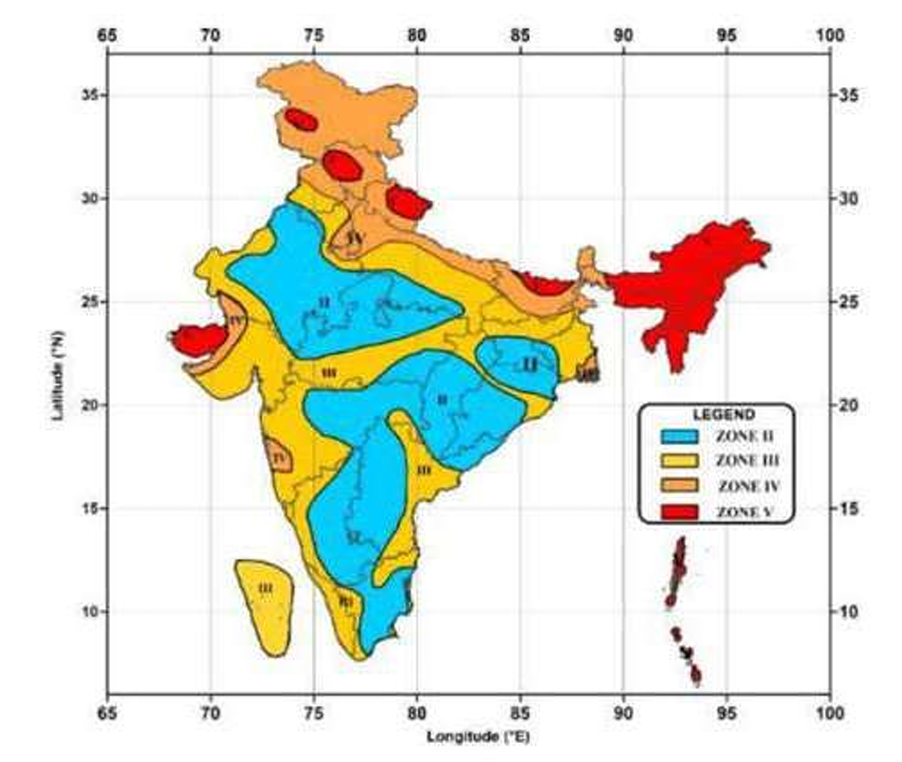
3 Disaster Management
Q. Answer the following in brief: ( Any two )
(1) Prepare a chart on natural and man-made(duty human errors or
carelessness) disasters:
Ans.
| Sr. No. | Natural disaster | Man-made disaster |
|---|---|---|
| (1) | Earthquake | Industrial explosions |
| (2) | Flood | Dam failure |
| (3) | Tsunami | Nuclear disaster |
| (4) | Wildfire | Industrial accidents |
| (5) | Tornado | Terrorist attacks |
| (6) | Hurricane | War and conflicts |
| (7) | Drought | Chemical spills |
| (8) | Volcanic eruption | Structural collapses |
| (9) | Landslide | Oil Rig explosions |
| (10) | Avalanches | Airplane crashes |
| (11) | Heat wave | Industrial pollution |
| (12) | Blizzard | Cyber attacks |
| (13) | Tidal waves | Oil spill |
| (14) | Dust storm | Genocide |
| (15) | Epidemic/pandemic | Nuclear accidents |
(2) Write in short, the importance of disaster management in respect to internal security.
Ans.
i) One of the major causes of various threats to internal security could be a natural or man-made disaster.
ii) It is equally important to create a strong disaster management system to keep internal security intact.
(3) What are the three stages of disaster management? Briefly write their nature and importance.
Ans.
i) Pre-disaster face: preparation for disaster prevention involves pre-planning.
ii) During disaster face; when a disaster strikes steps are taken to minimise the damage.
iii) Post disaster phase: This phase includes rehabilitation, restoration of life, bringing life to normalcy.
(4) What is first aid? prepare a list of essential items in the first aid box.
Ans.
i) First aid is an initial medical help given to an injured or sick person before professional help arrived.
ii) It includes, bandages, gauze, tape, antiseptic wipes, gloves, scissors, tweezers, CPR mask pain relievers, and a first aid manual.
| Activities based on written work |
Q. Two activities are given below. Write a report on any one of the activities.
(1) Biological hazards are becoming a threat or nuisance in your area. To cope with such a disaster, prepare a disaster management plan based on the following points :
Report Writing
(1)Recurring biological hazards:
Disease outbreaks bugs that spread illness, invasive species, or harmful algae blooms. eg. ringworm, malaria etc.
(2) Causes of the hazard:
i) Poor cleanliness, not enough healthcare and lack of preventive measures.
ii) Presence of disease carrying bugs like mosquitoes or ticks due to environmental factors.
ii) Introduction of plants or animals from other places that disrupt the local environment.
iv) Too many nutrients and pollutants in water bodies causing toxic algae in water.
(3) Damage caused by the hazard:
i) More people getting sick or dying, hospitals becoming overwhelmed.
ii) Disease like malaria, dengue, fever or lyme disease spreading, affecting peoples health.
iii) Loss of different plants and animals changes in how ecosystems work.
(4) Activity plan
• Pre-disaster activities
i) Figuring out which areas are most at risk.
ii) Planning how to respond, and being ready for emergencies.
iii) Teaching people how to prevent problems, letting them know how to protect themselves.
iv) Improving hospitals and clinics, having better systems to watch for diseases.
v) Regularly checking water bodies, plants and bug populations to find early science of problems.
• Activities during that disaster
i) Quickly getting help to people, giving medical care, keeping sick people separate.
ii) Keeping people informed about the situation, how to stay safe, and where to go for help.
iii) Making sure there are enough supplies, medical workers and equipment where they are needed.
iv) Continuously checking how diseases are spreading, watching for bugs.
v) Helping people leave dangerous areas and finding them safe places to stay temporarily.
• Post-disaster activities
i) Figuring out how bad things are and making plans to fix them and help people recover.
ii) Fixing and making hospitals better so they can handle future problems.
iii) Taking steps to bring back the environment after damage.
iv) Updating plans, practicing what to do and investing in research for the future.
v) Teaching people how to handle emergencies, giving them training and making sure they know how to respond.
(5) Your opinion disaster management:
To manage biological hazards well, we need to be prepared by assessing risks, educating the public, having good healthcare and working together.
(6) Source of information:
Internet, newspaper, books.
(2) List the disasters that strike your area during the rainy seasons. Write down the examples of the damage caused by the disaster and suggest disaster prevention measures.
Report Writing
(1) Name of the disaster:
(1) Floodings,
(2) Landslides,
(3) Mudslides
(2) Cause of disaster:
(1) Heavy rainfall, inadequate drainage systems deforestation, or clogged waterways.
(2) Intense rainfall saturating the soil, steep slopes, deforestation or improper land management.
(3) Heavy rainfall leading to saturated soil, steep slopes and poor drainage systems.
(3) Drainage caused by the disasters:
(1) Destruction of homes and infrastructure displacement of people, loss of lives.
(2) Burial of homes, destruction of infrastructure, loss of life, description of transportation.
(3) Damaged homes, infrastructure, loss of life, obstruction of roadways.
(4)Disaster management plan:
(1) Identify vulnerable areas prone to flooding landslides and mudslides.
(2) Develop early warning systems and established communication channels for alerts.
(3) Conduct public awareness campaigns to educate the risks of disaster.
(4) Collaborate with relevant authorities, including meteorological departments.
(5) Ensure the supply of electricity and water during disaster.
(5)Photographs, cuttings:

(6)Your opinion on disaster and security management:
Disaster and security management are important for keeping people safe and protecting communities.
(7)Sources of information:
Newspaper, define studies book, internet.
| (B) Activity Work |
Q. Solve the activities as directed:
(Any two).Visit the municipality office of the village or city where you reside and meet the disaster relief committee member and get a brief report on how disaster relief plan is prepared and executed.
Points:
i) Identify potential hazards and evaluate the risks.
ii) Formulate protocols and procedures for disaster response.
iii) Prepare individuals through practice and simulations.
iv) Plan for safe relocation and accommodation of affected populations.
(2) Take a survey of your area. List buildings or houses that are structurally safe and unsafe and give that list to your school, the area's corporator or village councillor. Make a chart of that list.
Ans.
| House no. /area | Extremely unsafe | Partially unsafe | Completely safe |
|---|---|---|---|
| (1) | 20 Houses | 70 Houses | 60 Houses |
| (2) | 40 Houses | 60 Houses | 68 Houses |
| (3) | 60 Houses | 40 Houses | 85 Houses |
| (4) | 80 Houses | 50 Houses | 100 Houses |
| (5) | 20 Houses | 30 Houses | 60 Houses |
(3) Prepare a questionnaire for interviewing a fire bridge personal, based on the point such as name, education, other competencies, nature of work, experience message, etc.
i) What is your name?
ii) What is your position/role in the fire bridge?
iii) What is your educational background?
iv) What additional competencies or specialised training do you have?
v) How would you describe the nature of your work as a fire brigade personal?
vi) How many years of experience do you have in the field?
vii) Can you provide examples of challenging situations or incidents you have handled?
viii) Can you share a memorable success story or achievement from your career?
(4) Mark India's group-wise earthquake prone areas/zones in the following map of India using different colours. Briefly write down under which earthquake zone does your area come and the care you need to take.

(1) Under which earthquake prone group does your area come? Ans. It comes in zone IV of earthquake prone zone. (2) Care to be taken in the event of an earthquake. Ans. i) Take cover under studry furniture or in a doorway. ii) Avoid windows, heavy furniture and hazards. iii) Beware of aftershocks and assess safety before moving.